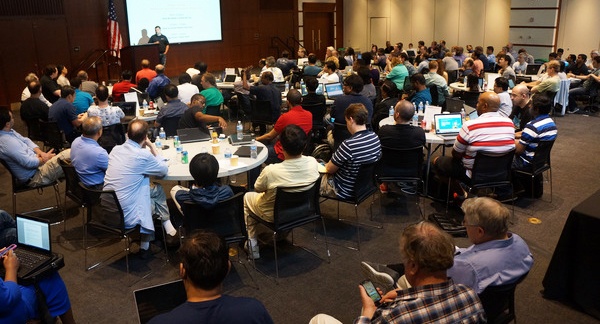The Fundamentals of Engineering Culture
Software Engineering Culture 16-08-11 Modev Staff 4 min read

At the heart of every good organization is a strong engineering culture – a “manifestation of the shared values of the organization as represented by the actions of its members” (Kevin Goldsmith, Avvo). These actions are structural, are taught to each new member of a team, and are integrated into how an organization operates and how new applicants are evaluated.
In short, it’s very important, and yet many organizations struggle not only to identify and define the core components of their company culture, but how that culture applies to specific teams and team members. For those engineers who naturally work independently but are most effective in a collaborative environment, building a strong culture is a challenge worth addressing.
Learn more about Engineering Culture from Elwin Loomis, Target's Sr. Director, Store of the Future at EXO Software Summit September 14-16
To ensure the lack of culture doesn’t become an issue, there are several factors you can keep in mind when evaluating or building the foundation of your engineering culture.
Defining Key Values
The first step to understanding and building a strong culture is to clearly define the values that drive a company and its employees to succeed. These are the shared beliefs that every member of the team buys into when they come on board – things like:
- Transparency
- Trust
- Continuous improvement
- Responsibility
- Learning from failure
- Innovation
- Iterative development
Culture is about building a structure that prioritizes these values on a company-wide basis. It’s not about toys, free food, and hammocks near desks. It’s about fostering an environment in which every member of the team has the resources needed to fulfill the values and the drive and motivation to do so.
Efficiency and Resources
Good engineering culture focuses on getting things done in an effective way. Consumer-focused development that produces something all members of the team can be proud of, that solves specific problems, and that keeps people on the team happy and engaged is a big part of this.
It is an environment in which people enjoy coming to work and are eager to get as much done as possible. That means providing the resources the team needs to get those tasks done within the timeframe they are expected to complete their goals. If that means providing meals in-house so team members can work when they are most productive, so be it. But it also might include flexibility in vacation scheduling, work location, meeting structure, and management communication style.
The Role of a Leader in Engineering Culture
Good culture thrives from the top down. It doesn’t create success but enables it, just as a good leader does. Team leaders must be dedicated to providing direction and guidance to every member of the team. They lead by example, but also through vision of how to achieve the goals set before the team as a whole. They listen, integrate the needs and observations of the team into their efforts, and they communicate constantly to ensure nothing is left unsaid.
Most importantly of all, they get out of the way and let their team do what they do best. Good leadership trusts people to get the job done in the way that is best suited to them. Also known as servant leadership, the goal is to coach, mentor, and solve blockages rather than just “tell people what to do”.
How to Handle Success and Failure
In many organizations, success is expected and failure is endlessly analyzed. In a strong culture, however, success must be celebrated and failure used as a learning experience.
It can be beneficial to track the cause of a failure, but expending extensive energy to determine who is at fault when a system or project fails is not an effective way to encourage efficiency or innovation from the team. It makes people cautious and protective. Good culture will highlight the value of failure and put in place systems that guarantee everyone learns from mistakes and breakdowns, while at the same time calling out and celebrating success.
The Next Step
Culture isn’t a book you can read or template you can paste over your organization. It is a mindset that starts at the top and permeates an organization. It is part of how you hold meetings, discuss projects, communicate ideas, and coach your team. It is part of how you hire and at times how you fire, and above all else, it requires consistency.
If you take the time to prioritize the culture of your organization and communicate with your team clearly as to what that means, everyone will be better for it.
